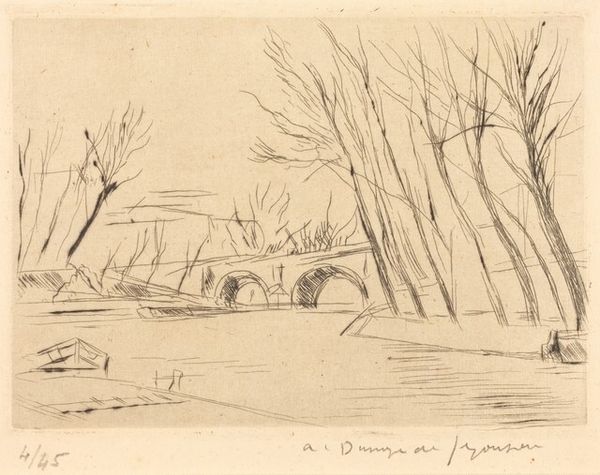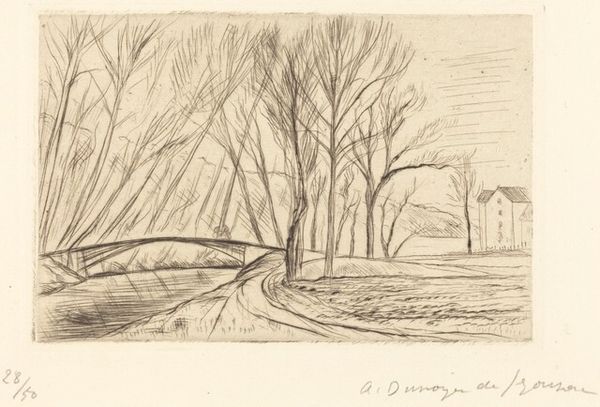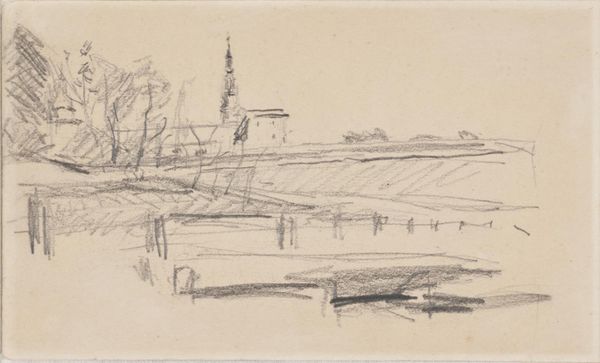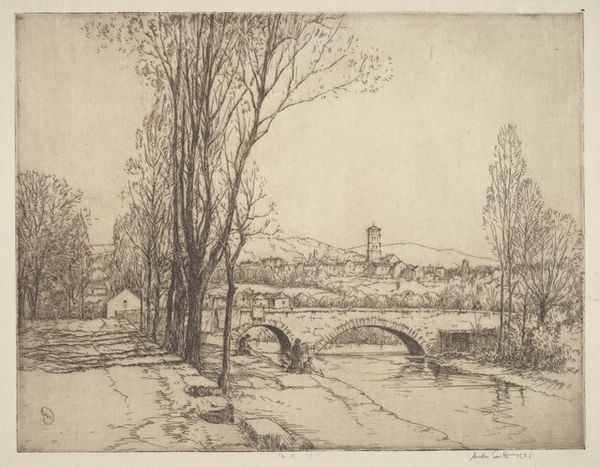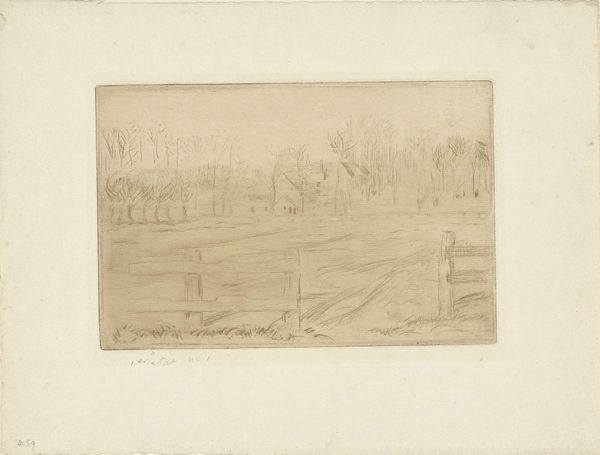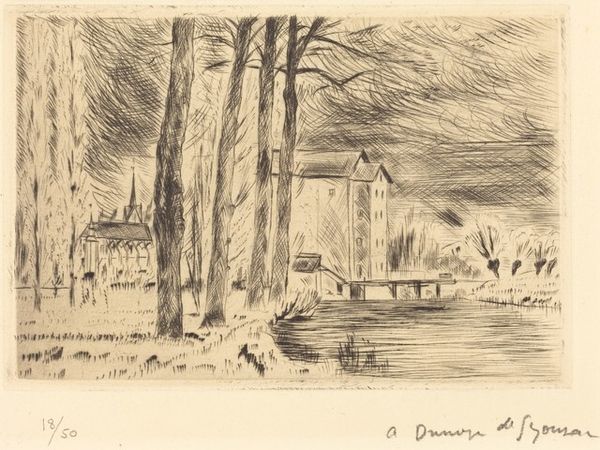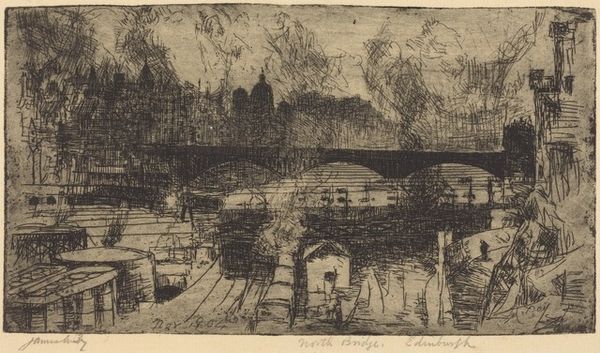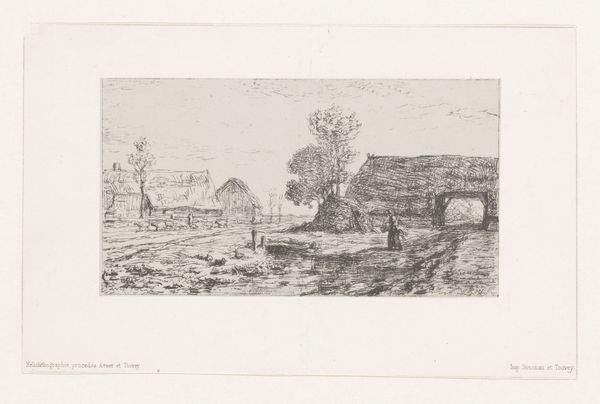
Copyright: National Gallery of Art: CC0 1.0
Curator: Looking at this print, "The Pont des Arts" by André Dunoyer de Segonzac, completed in 1924, I'm immediately drawn to the delicacy of line, the economy of mark-making. Editor: There's a starkness to it, a quiet melancholy, even. Like a fleeting memory caught in the pale Parisian light. Curator: Note how Segonzac uses the etching technique to its full potential. The cross-hatching creates subtle gradations of tone, implying form without resorting to heavy shading. See how the bridge emerges from the hazy distance? Editor: It feels like a half-remembered dream, doesn’t it? I like how the bare trees in the foreground reach up, clawing at the sky. And the little figure walking away adds this real sense of solitude. Almost makes me feel chilly! Curator: That's the emotional effect of the artist's controlled, deliberate strokes. Observe the composition itself; the placement of the figure is crucial. The subtle lines and shading are designed to draw the viewer’s eye and suggest form and structure, despite the spartan lines. Editor: The whole scene just has a ghostly feel, like it's a snapshot from a time long gone by. And I do appreciate how he hints at movement on the river – these subtle but noticeable lines are masterful. But it's bleak, even for Paris. Curator: Consider also, the materiality of the work. As a print it becomes multiple, it enters circulation, like an idea spreading. The Pont des Arts then, in its repetition, stands for something more than just a bridge. Editor: A memory shared. The city of lights seen through sepia-toned glasses. You know, thinking about this work now, I understand it's melancholic, it still is somehow, oddly beautiful, don’t you agree? Curator: The stark formal language indeed elicits complex responses and allows viewers to engage deeply with Segonzac’s vision. Editor: Thanks for lending clarity, I feel like I understand this one just a bit more.
Comments
No comments
Be the first to comment and join the conversation on the ultimate creative platform.
